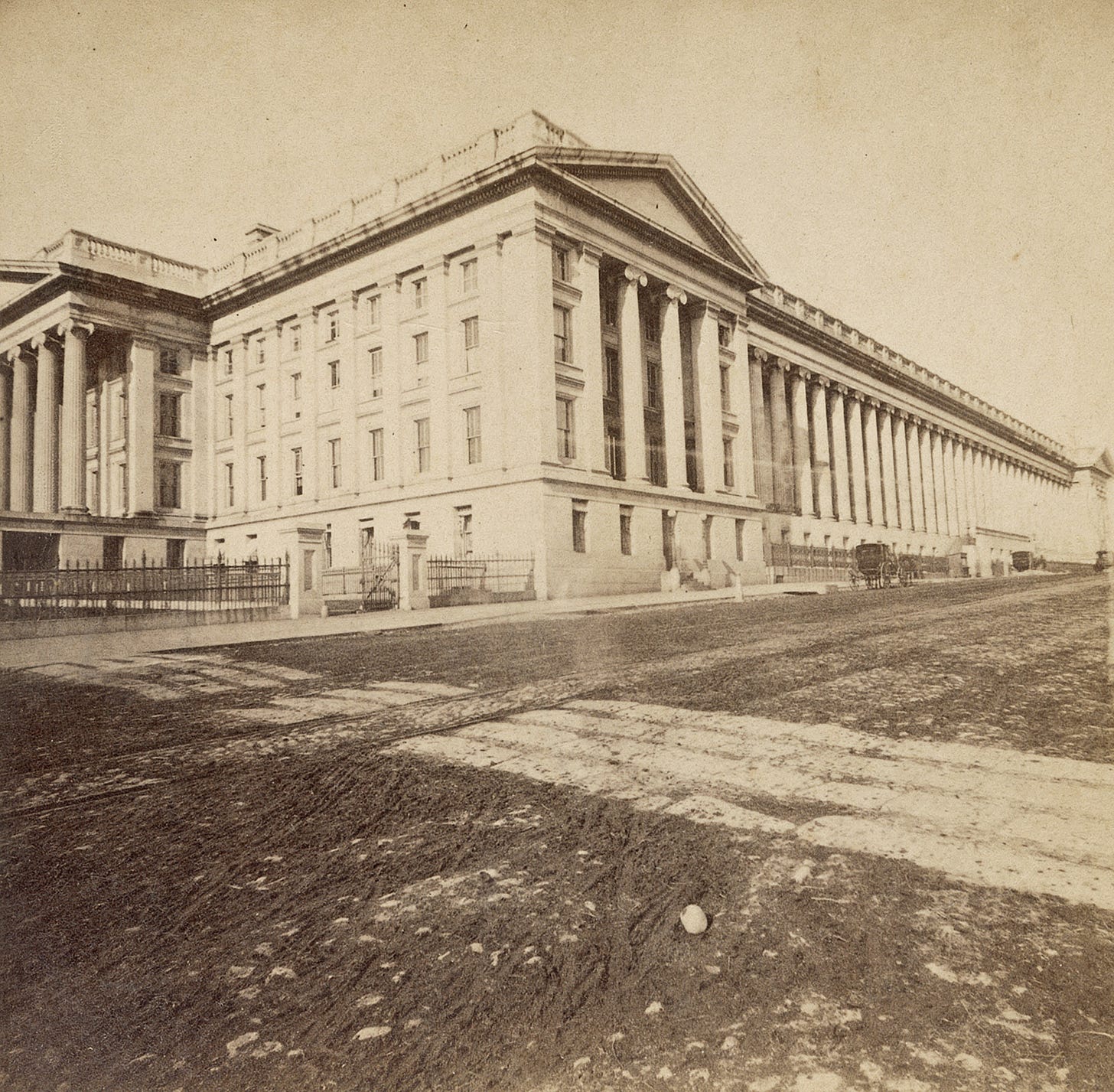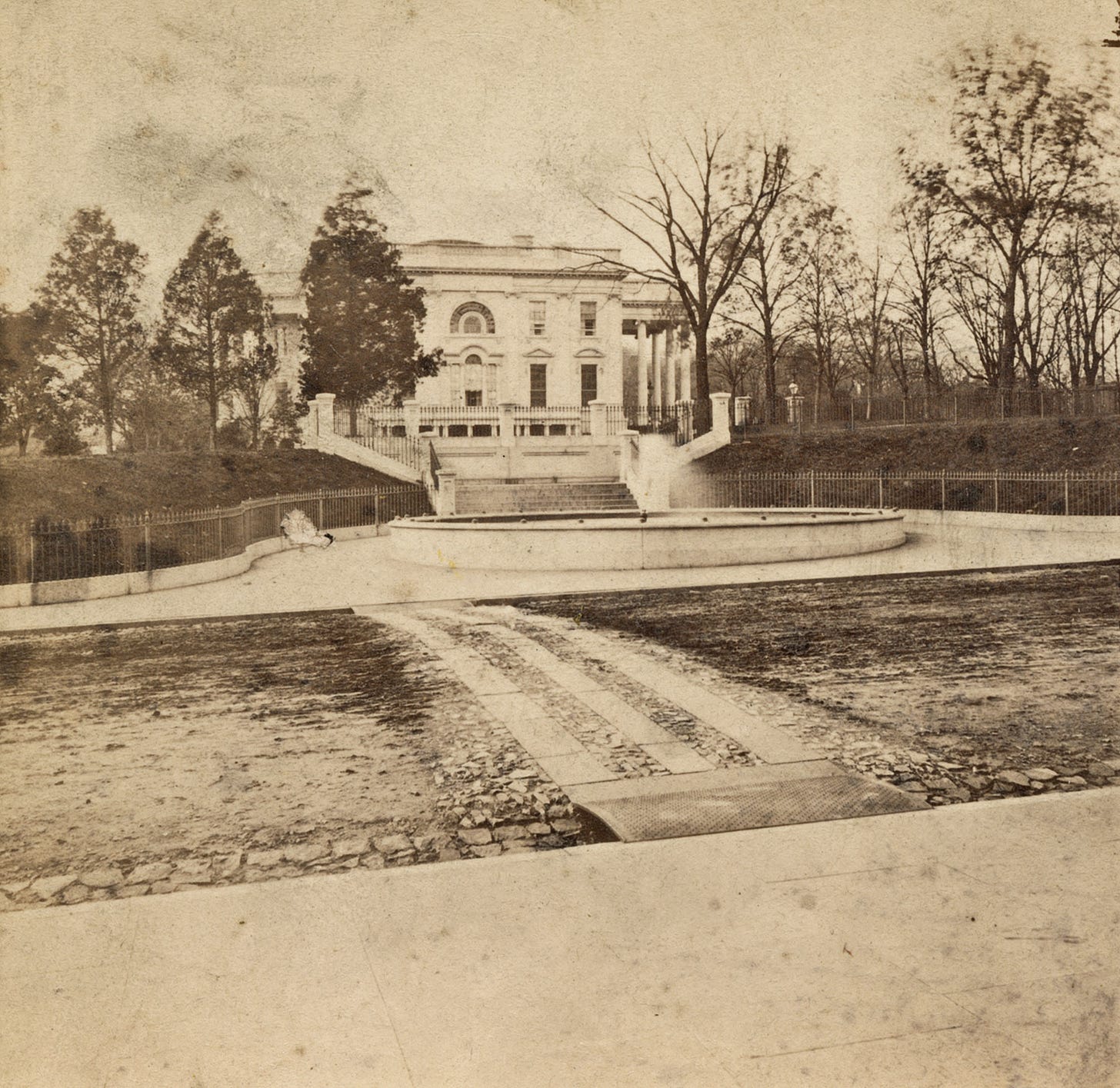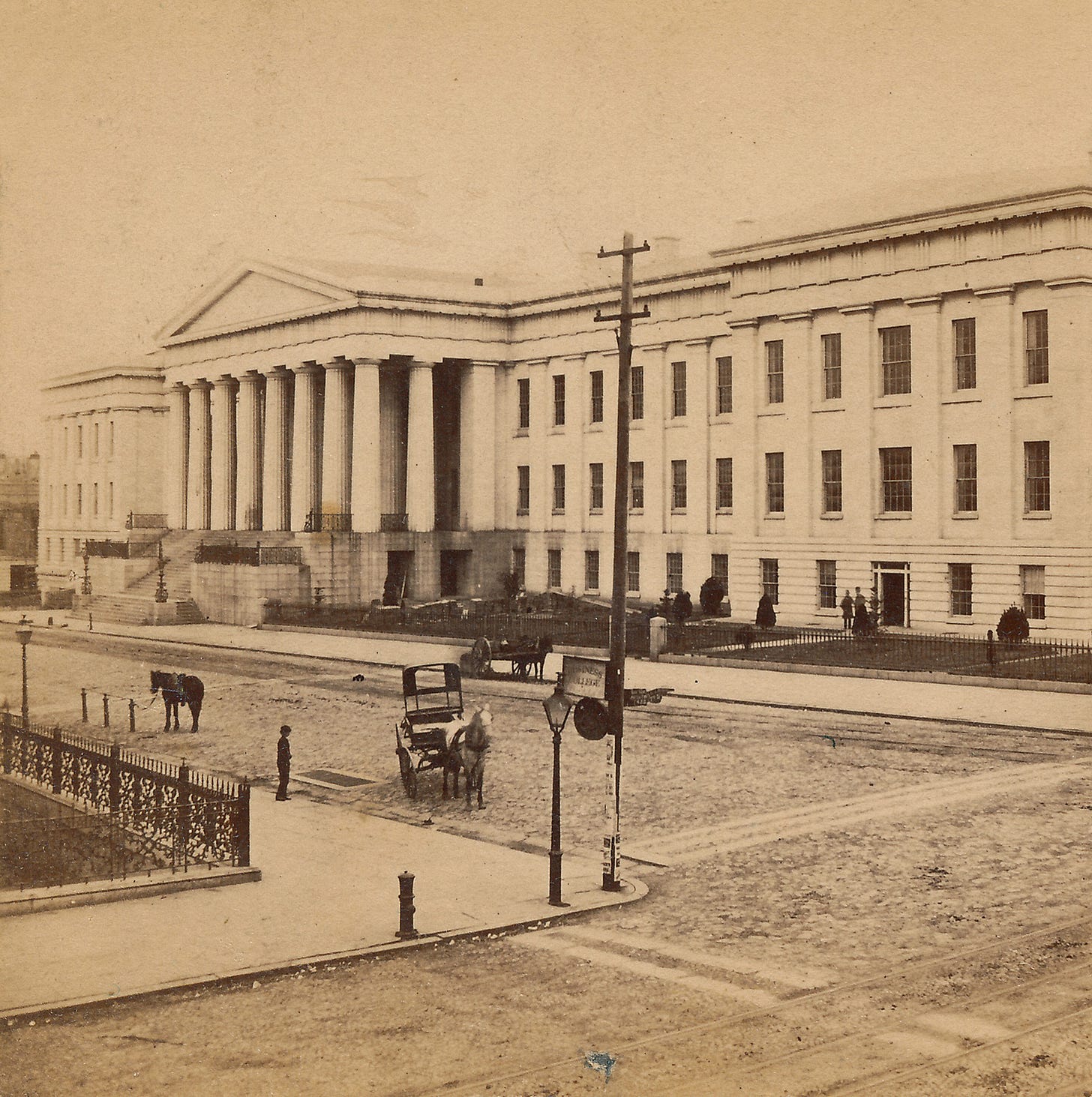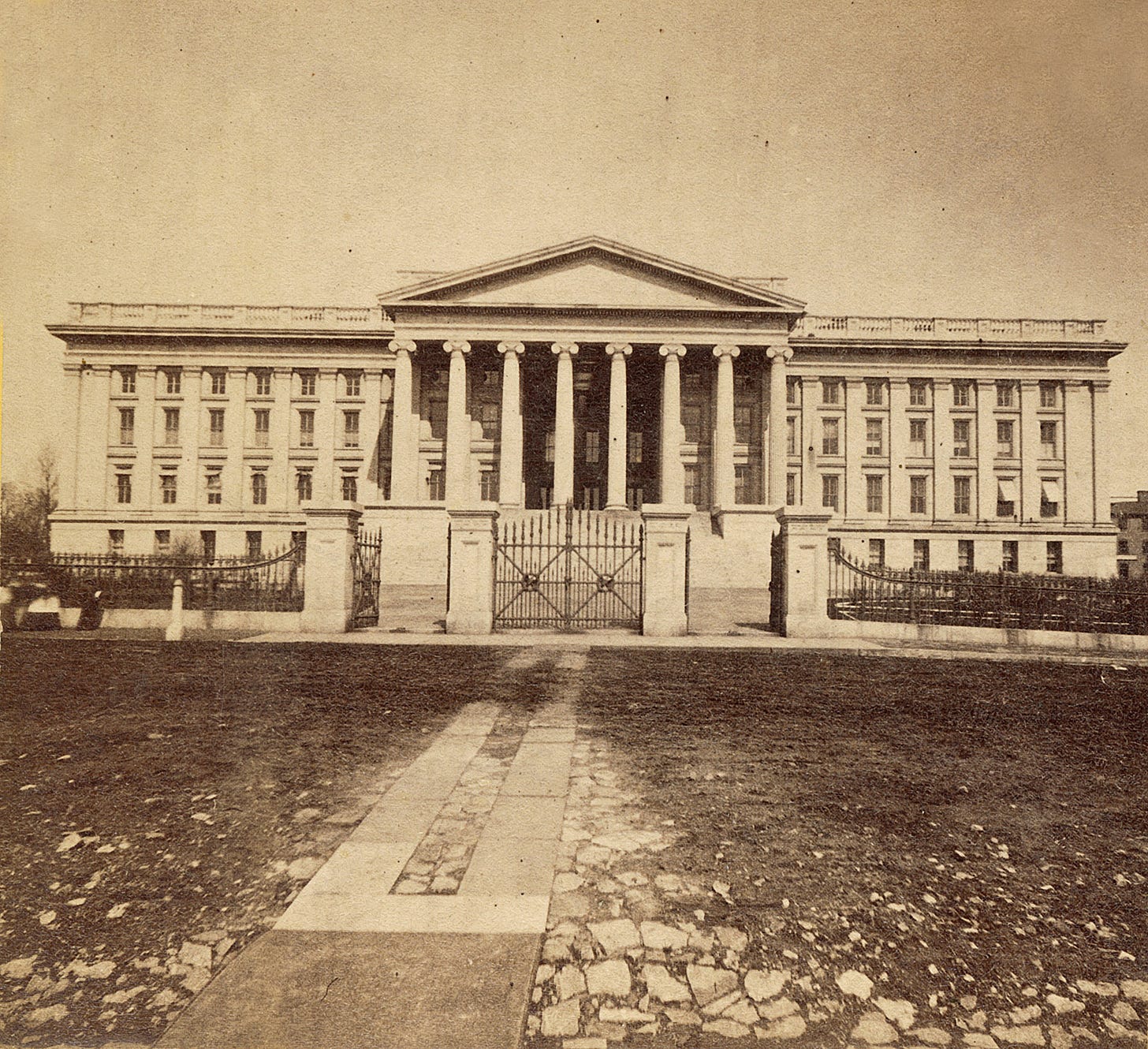Early Crosswalks and the Muddy Streets of Washington
The first DC crosswalks were in place by the 1850s
Crosswalks have been around a long time, longer than one might think. If you search the internet, you’ll find mention of the ancient “crosswalks” of Pompeii—sets of stepping stones across roadways that allowed pedestrians to avoid the muck and sewage that coursed through the streets. Chroniclers of the history of crosswalks often jump from Pompeii to modern times, citing 1868 London, when the first crosswalk with a traffic signal was installed, as the next important milestone in the evolution of crosswalks, or the 1930s, when modern crosswalks appeared around the world. But crosswalks more in keeping with the Pompeiian model were around earlier than that. They were installed on DC streets (and in other American cities) at least by the 1850s.
The image above, from the late 1860s, shows a crosswalk on the south side of the Treasury Building. The stone walkway provides a slightly raised path across the dirt (mud) and cobblestones of the street so that shoes and clothes theoretically aren’t overly soiled. It’s clear that this walk hasn’t been swept lately, as mud is heavily strewn across the center area where carriages and omnibuses have trundled through. Without regular cleaning, crosswalks offered little advantage.

This next view of a crosswalk on 15th Street NW circa 1867, shows a stone path barely keeping the busy street’s mud at bay. Early streetcar tracks (laid in 1862) can be seen crossing through, along with many carriage wheel ruts.
Newspapers of the 1860s and 1870s rarely mention crosswalks, but when they do, it is telling. In January 1861, just three months before the Civil War began with the firing on Fort Sumter, a brief notice in the Daily Constitution read: “The new crosswalk from the corner of First street north and Pennsylvania avenue to the gate of the Capitol grounds will, we hope, be speedily completed, for the sake of those who now have to trudge through the mud that lies so thick thereabouts.”1

In 1871, as downtown streets grew more congested both with pedestrians and wheeled traffic, DC adopted a regulation barring streetcars from “encumber[ing] or obstruct[ing] any sidewalk or crosswalk…for a longer period than is absolutely necessary for the safe and expeditious discharge of passengers.” It’s not clear whether the purpose of this regulation was to improve safety or simply to protect pedestrians’ ease of movement across streets.2

A small article that appeared in the Evening Star in 1878 was the first glimmer I could find of crosswalks having the clear public safety function that they have today. It was an anecdote that came from Missouri: “Judge Simmons, of St. Louis, holds that as crosswalks are made for the convenience of persons on foot, it is the duty of drivers, including those of horse cars [horse-drawn streetcars], not only to check their speed when a person is on a crosswalk, or even approaching it, but to stop where there is the least danger of a collision. The judge fined a driver, who, expecting people to get out of the way, drove among them.”3
In those days, no one was obliged to use crosswalks—they were a convenience. Pedestrians were welcome to cross streets wherever they pleased. The turn of the 20th century brought automobiles to the streets and dramatically changed the safety dynamics, creating a vastly increased risk to pedestrians. Historian Peter D. Norton has chronicled the rise of traffic fatalities in the 1900s and 1910s and how they affected transportation policy. The old understanding that the street was just as much the domain of pedestrians as of wheeled vehicles—with children freely playing in the streets—gradually was supplanted by the interests of the automobile industry. Pedestrian victims of auto accidents were increasingly blamed for accidents instead of the reckless drivers who caused them. We ended up with our modern arrangement where automobiles own the streets and pedestrians are relegated to strictly controlled crossings at designated locations, often only when signals permit. —In the modern era, we finally have smoothly paved streets that are clean enough to walk around freely, but it is no longer safe to do so, and probably never will be again.4
“City Intelligence,” Daily Constitution, Jan. 8, 1861.
Daily National Republican, Sept. 4, 1871.
“A Sensible Judge,” Evening Star, Oct. 12, 1878, 5.
See Peter D. Norton, Fighting Traffic: The Dawn of the Motor Age in the American City (MIT Press, 2008), 65-104.




Love this post! What a treat for Monday reading.
That is fascinating! Here is a an 1866 print that I believe shows the crosswalk at the gates of the Capitol, mentioned in 1861, and illustrates the many uses of a single street. https://history.house.gov/Collection/Listing/2018/2018-085-005/